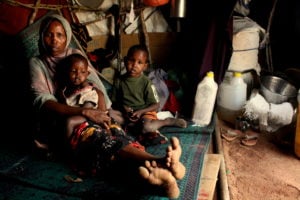![]()

The government of the Republic of Kenya announced they will relocate thousands of refugees living in one of the largest refugee camps in the world.
Dadaab, a tented city of refugees, has been home for the past 23 years to around 300,000 Somali Refugees.
The government of the Republic of Kenya considered its national security interests and decided to end the hosting of refugees after over two decades, reported National Public Radio.
Anna MacLachlan, a junior management major, is a missionary kid who went to school in Kenya and currently works with Enactus to help refugees in Uganda.
“Of all the people on earth, refugees are the most in need. It is not their choice for their families to be killed. It is not their choice to be ostracized. It is not their choice to go to America or Kenya or Uganda. They want to feel at home,” MacLachlan said.
Nichole Genheimer, a reading specialist in Student Support Services, explained what it was like to grow up in Kenya near a center for refugees.
When she was five years old, Genheimer played with the refugee children from the center.
She said despite dressing differently, speaking different languages and practicing different religions, she and the children related to each other on a human level.
Genheimer and her mother also built relationships with many of the women at the refugee center who were searching for a place to fit in.
“All these people had plans about where they were going to be resettled because they couldn’t go home,” Genheimer said.
Despite the refugees not adding much to the economy, Genheimer explained that they have become “a part of the fabric of Kenya.”
Kenya, under strain from rising terrorist attacks over the last few years, is trying to protect the safety of its citizens with the new precautions.
“In some ways, I think Kenya does have a valid claim. But at the same time, what do you do? These are people’s lives we are talking about. Kenya obviously didn’t ask for these people to come in and Kenya has suffered a lot in the last years with several bombings from a Somali militant group,” Genheimer said.
Many refugees found a home outside of their war-torn, occupied cities and countries in the refugee camp Dadaab.
A lot of these people have made this camp their home and it’s safe, Genheimer said.
“But these places weren’t made to be permanent. So what do you
do with that?”
The government has also disbanded the Department of Refugee Affairs, which “works with humanitarian organizations looking after the welfare of refugees,” according to The Associated Press.
“For refugees, not only is the transition process really hard, but they are continually reminded of the fact that they do not belong and that they are at the mercy of their host government. Whereas I am empowered by my country of birth, they are condemned by theirs,” MacLachlan concluded.
A majority of these people don’t want to hurt anyone and they are hurting, Genheimer shared.
“While Kenya may have reason, even potentially good reason, to say we don’t want these people anymore, kicking all these people out will negatively affect thousands of lives.”




